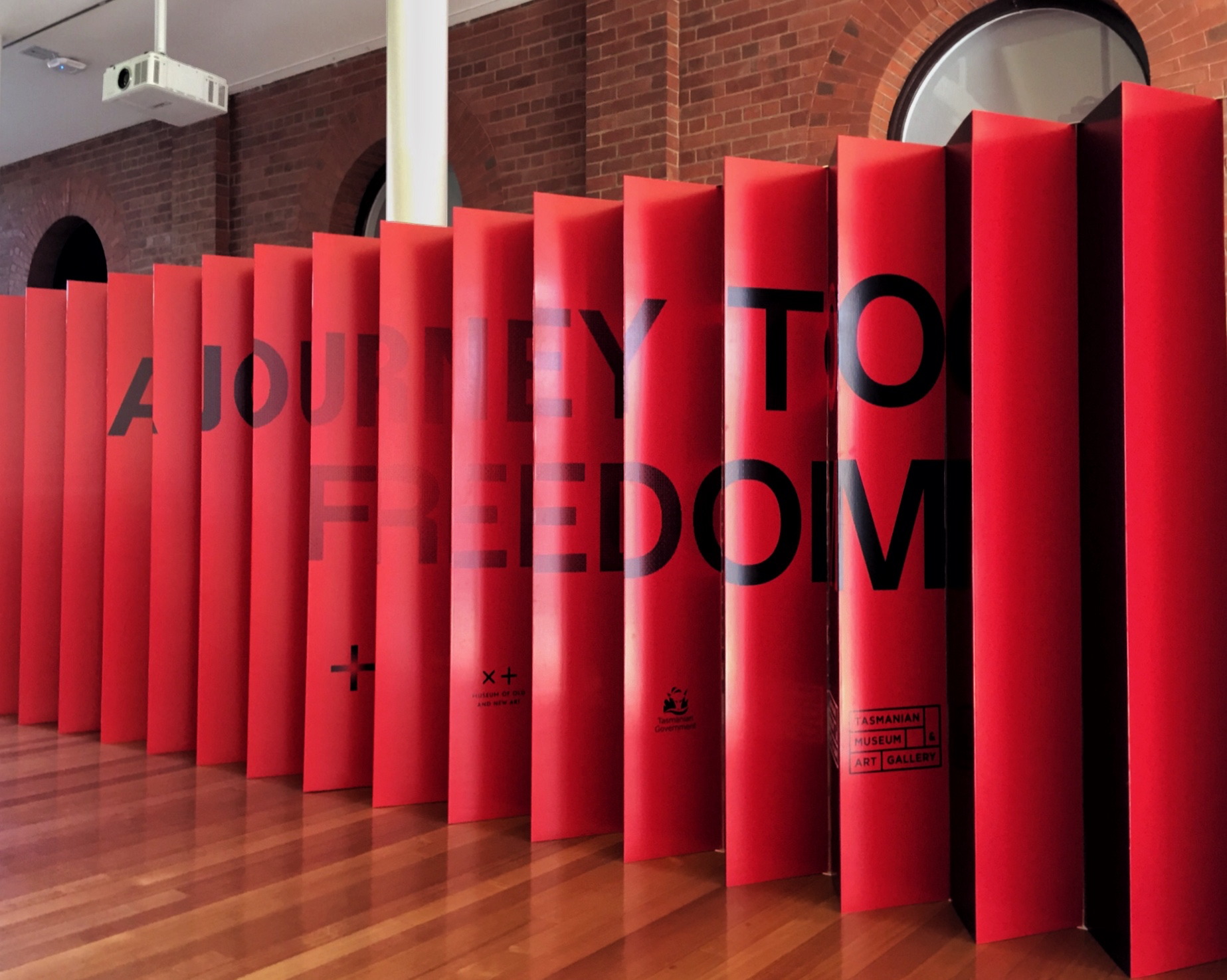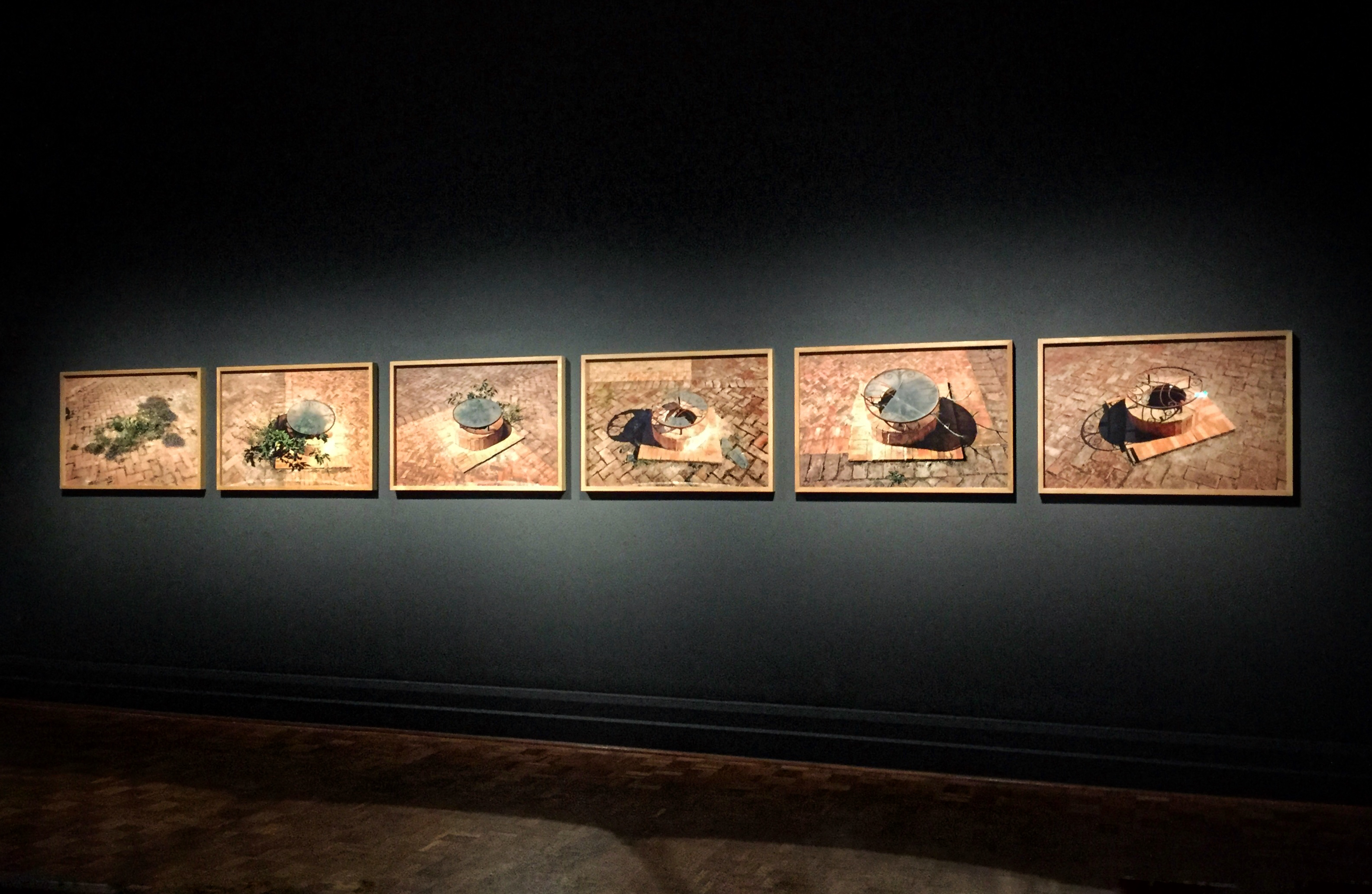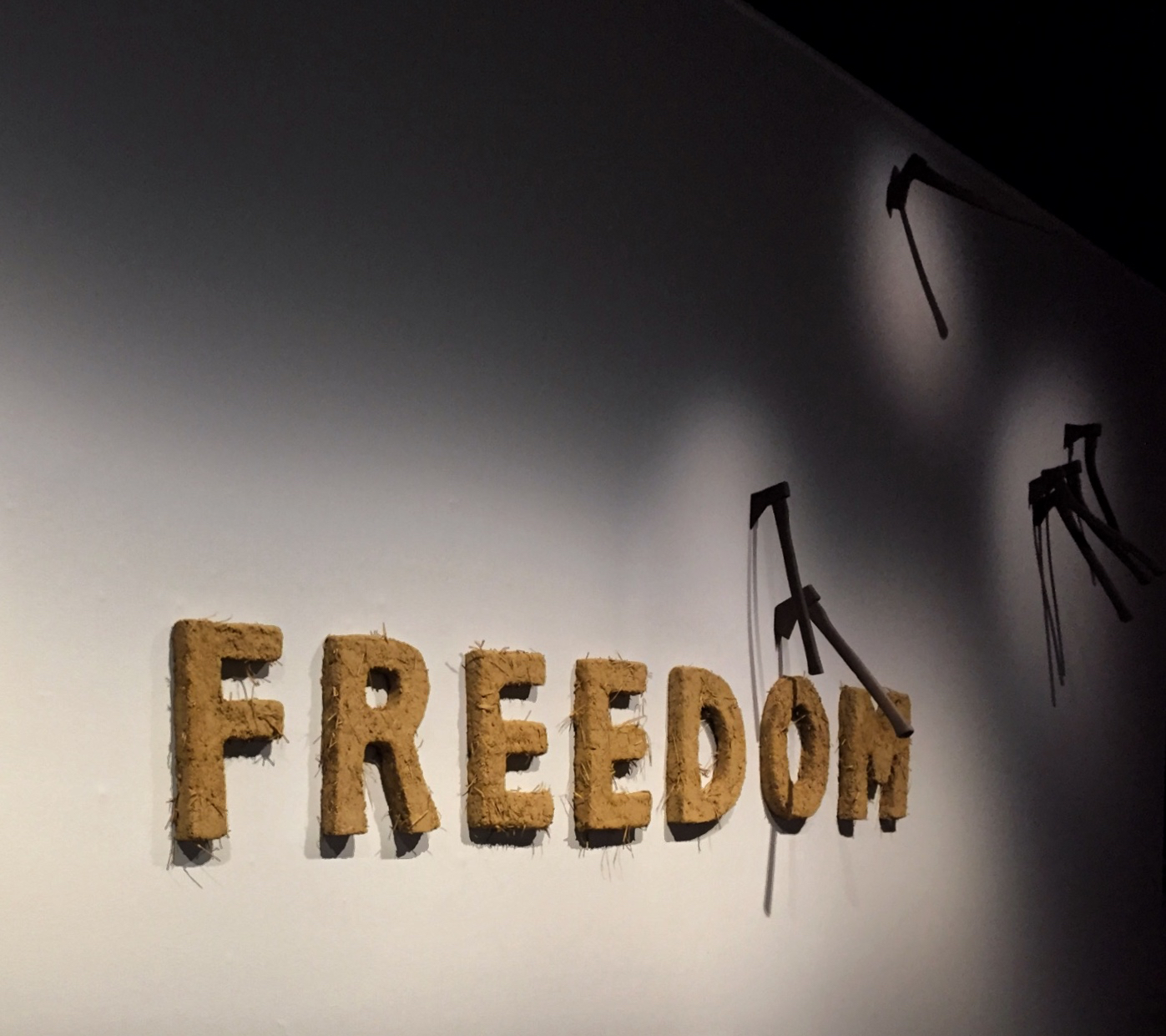A journey to freedom
After Friday’s visit to TMAG with Kramstable, I said I was going to go back to take in A Journey to Freedom more fully.

I often say I’m going to revisit something and never end up doing it but this time I felt I really had to. I don’t know if it was the lure of the virtual reality “Orbital vanitas” exhibit that I didn’t see on Friday because Kramstable was too young or whether I wanted to get more fully absorbed in the works by Jhafis Quintero and Ali Kazma in the Bond Store, but this time I went back and took my time.
I’m glad I did.
I went to the Bond Store first and was the only person there.
As I noted on Friday, the low ceilings of the basement gallery added to the feeling of being imprisoned. The ten videos by Jhafis Quintero were looping so I could hear different parts of them at different times as I was watching them. This time I watched all of them. I was especially moved by the video “All the way” which depicts a journey from prison to a hospital and is one of the only ways a prisoner could get to see the outside world.

Being alone in here with these videos felt very creepy and, adding to this claustrophobic atmosphere, I could hear footsteps from the people in the gallery above me, as well as the music from Janet Biggs’ piece “Carpe Diem”.
I don’t know if this was deliberate, to be able to hear the strains of Pachelbel’s Canon alongside Jhafis Quintero’s pain at being incarcerated, but I found it very moving and it added a different perspective to the videos.
Janet Biggs’ piece, juxtapositioning a tethered eagle against an American football team, was interesting and the vision of the eagle was one of the most disturbing pieces for me. It clearly wanted to fly away.
The remainder of the exhibits were in the main museum building, which I had seen on Friday but this time I had the chance to take my time. I experienced the “Orbital vanitas” virtual reality exhibit, which was very cool but kids under 13 weren’t allowed to see it so we hadn’t done it on Friday. The artist, Shaun Gladwell, says, “You are placed inside an enormous human skull that is orbiting above the earth. The atmosphere reflects my current mood in both political and philosophical terms — which is very dark indeed.” The content wasn’t anything that I’d consider unsuitable for an under-13 year old so there must be some technical reason younger kids can’t see it.
I watched the 11-minute video “A Guard’s Story: at work inside our detention centres” by Sam Wallman, which is the story told by a former Serco employee at a detention centre. It sounded horrific.
“It is still nightfall” (C’est encore la nuit) by Mounir Fatmi was a series of photographs of the underground Qara Prison in Morocco. The photos were of the ground-level air vents that were the only source of light in the prison. It was disturbing to think that such a complex held thousands of slaves in the 18th century who were shackled and forced to work on building projects.

Closer to home was the “Prison cell” exhibit by Jean-Marcel Pancin, which was a cell door from Risdon Prison mounted on a concrete slab the same dimensions as the original cells. Jean-Marcel Pancin has made other versions of this work in other places, and its aim is to “draw attention to injustice and suffering caused by confining people behind prison walls”.

It was positioned alongside Sam Wallman’s wall of drawing, which included commentary on detention centres, convicts and prisoners, as well as the statistic that imprisonment rates have increased by 39 per cent in the last ten years. “Some people,” it says, “consider prisons holding cells for the poor.”
Ricky Maynard made his series of photos of Aboriginal men in prison, “No more than what you think” in response to the Royal Commission into Aboriginal Deaths in Custody, which noted, among other things, that Aboriginal people are 15 times more likely to be imprisoned than non-Aboriginal people. He says the photographs “carry messages of our survival, not only of man’s inhumanity to man, but a feeling of what it’s like to be born black”.

It was very thought-provoking. The exhibits were moving and powerful and made me reflect on how fortunate I am to live where I do and not be in a situation where I’m likely to have my freedom taken from me. I’m glad to have taken the time to go back and revisit it.

The exhibition is open until 29 July so you still have a few days to see it. I highly recommend it.